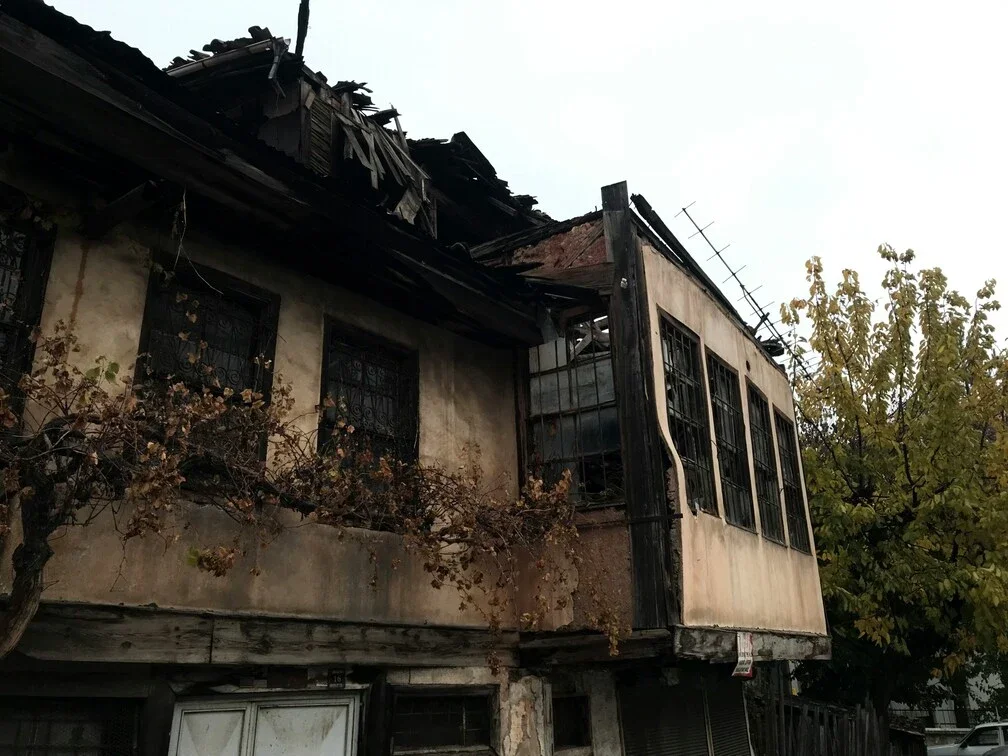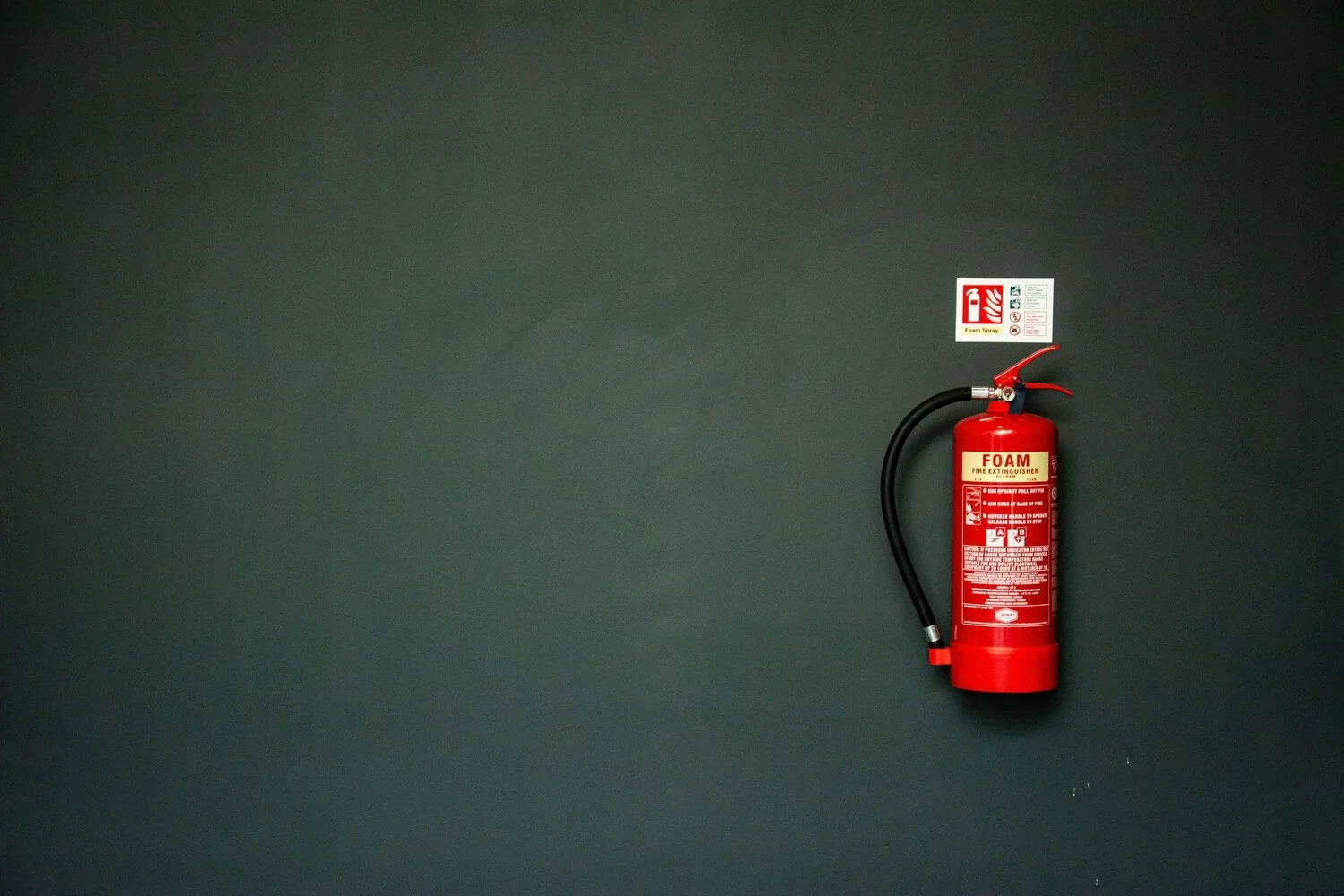
Fire Protection Services in London, Kent & East Sussex
At GMSE Fire & Security, we deliver expert fire protection services for homes, businesses, and historic properties across London, Kent, and East Sussex. As a BAFE-accredited fire protection company, we design, install, and maintain fully compliant systems, including fire alarms, smoke detectors, heat detectors, and more, to meet the latest British Standards (BS5839) and the Regulatory Reform (Fire Safety) Order 2005.
Trusted. Local.
Why Fire Safety Matters for Homes and Businesses
A fire can devastate more than just your property; it can put lives at risk, disrupt livelihoods, and permanently shut down businesses. In fact, over 80% of companies affected by fire never recover. The financial loss, legal consequences, and operational downtime can be overwhelming. That's why having reliable, compliant fire protection measures in place isn't just a legal obligation; it's essential for protecting your people, your premises, and your future.
“Over 80% of companies affected by fire never recover.”
Comprehensive Fire Protection Solutions
Fire protection services are designed to keep homes, businesses, residential blocks, and even listed properties fully compliant and protected. Our fully trained fire alarm surveyors provide expert advice to ensure your systems meet all UK fire safety regulations.
Fire Alarms
Hardwired or wireless (radio) systems, including smoke detectors, heat detectors, beam detectors, manual call points, and fire control panels — all installed to BS5839 standards.
Cause and Effects Programming
We can integrate your fire alarm system with other critical services, including sprinkler systems, gas suppression, HVAC shutoff, lift recalls, automatic door releases, emergency lighting, gas/electrical cut-offs, and fire brigade notifications. All events and faults are logged and alerts issued for any issues.
Fire Extinguishers & Signage
We also supply, install, and maintain fire extinguishers and safety signage, tailored to your property type.
Every solution is tailored to your site, your risk level, and your legal obligations ensuring you’re not only protected but fully prepared.
Fire Alarm Systems
We offer two types of fire alarm installations to suit the layout, usage, and risk level of your property:
Hardwired Fire Alarm Systems
These systems use cables to connect all detectors and devices to a central fire control panel and power supply. They’re ideal for permanent installations in commercial or new-build settings where cable runs can be planned into the structure.
Radio (Wireless) Fire Alarm Systems
Wireless fire alarm systems use battery-powered detectors and devices that communicate via radio signal. With no need to disrupt décor or drill through walls, they’re perfect for listed buildings, theatres, heritage sites, and private homes. Installation is fast, clean, and compliant.
Fire Alarm System Options
Our fire alarms can be installed in two main configurations:
Standalone Systems
These sound alarms throughout your building, alerting occupants to evacuate and call the emergency services manually. Suitable for lower-risk or smaller sites.
Monitored Systems
These go a step further from standalone systems. They automatically notify a nominated keyholder and the fire and rescue service through our 24/7 monitoring centre. Many insurers and fire risk assessments recommend monitored systems for higher-risk properties such as timber-framed buildings, historic sites, or commercial premises.
Fire Alarm Detection
Our key offerings include:
Smoke Detectors:
Detect smoke particles in the air for early warning
Heat Detectors:
Ideal for kitchens or dusty environments
Beam Detectors
Cover large, open areas such as warehouses or atriums
Manual Call Points
Positioned near exits for emergency activation
Fire Control Panels
Monitor and manage all devices in the system
We can also integrate smoke or heat detectors with existing intruder alarms, where suitable - providing added protection with minimal disruption.
Fire Extinguishers and Signage
Fire alarms are just one part of your protection plan. Physical fire-fighting equipment and clear signage are equally essential for compliance and safety.
As part of your fire alarm survey, GMSE Fire & Security will assess your property’s needs and provide expert recommendations on:
Fire Extinguishers
We supply, install, and maintain extinguishers suitable for a range of fire classes — ensuring you’re equipped for your specific risks.
Compliant Signage
From fire action notices to exit route signs, we help ensure your building has the correct signage in the right locations to aid safe evacuation.
All equipment and signage are supplied in line with current UK fire safety regulations.
Fire Alarm Maintenance and Testing
Regular maintenance is essential to ensure your fire alarm system remains reliable, compliant with BS5839, and fully functional in an emergency. Our experienced engineers carry out thorough inspections and testing tailored to your site’s risk level and fire risk assessment.
Typical maintenance includes:
Battery Backup Tests
Every six months, we test that your backup batteries can power the system for 24 hours of standby and at least 30 minutes of full alarm activation during a power outage. Batteries are replaced at least every four years.
Visual Inspections
We check for any environmental or structural changes that could affect detection performance, including ensuring a 500mm clear zone around detectors and no storage within 300mm below devices.
Manual Call Point Checks
We ensure each manual call point is accessible, operational, and correctly positioned at exits and escape routes, as required by regulations.
Device Testing
Every detector, call point, and alarm device is tested annually, with a rotating schedule that ensures at least one device per zone is inspected at each visit. Devices are cleaned to maintain accuracy.
Sounder and Fault Checks
Sounders, cable fixings, and fault simulation features are tested to confirm the system’s performance and response accuracy.
Radio Signal Strength (for wireless systems)
We verify the radio signal strength of all devices in wireless systems to ensure reliable communication across the site.
Cause and Effect Testing
Relays, outputs, and control panel switches are tested to ensure the correct automated response occurs in the event of a fire.
Log Reviews and False Alarm Reduction
We review your system logs to identify and address the cause of any false alarms, helping reduce disruption and improve long-term system performance.
Zone Chart Verification
We confirm that your fire alarm zone chart is accurate and up-to-date - a key requirement for audits and emergency services.
Inspections are typically carried out every six months in line with BS5839, but the exact schedule will be tailored to your fire risk assessment.
Why GMSE Fire & Security?
✅ BAFE Accredited: Independently certified for competence and quality in fire safety
✅ BS5839 Compliant: All systems are designed, installed, and maintained to the latest British Standards
✅ Local Expertise: Our friendly engineers are based in the South East and known for fast, responsive service
✅ Free Consultations: Book a no-obligation fire safety survey or quote — and get expert guidance from the start
✅ Tailored Solutions: We design fire protection systems to suit commercial, residential, and heritage properties
Fire Protection Services FAQs
-
There are two main types of fire protection: active and passive.
Active fire protection involves systems that take action in response to a fire — such as fire alarms, sprinkler systems, fire extinguishers, and smoke detectors. These systems require motion, power, or activation to work.
Passive fire protection consists of built-in structural elements that help contain or slow the spread of fire, such as fire doors, fire-resistant walls and floors, compartmentation, and fire safety signage. These systems are always “on” and don’t require activation.
A well-designed fire safety strategy uses both active and passive measures to protect people and property.
-
No, a fire safety certificate is not a legal requirement in the UK under current regulations. However, under the Regulatory Reform (Fire Safety) Order 2005, the responsible person (usually the business owner, employer, or building manager) must carry out and maintain a suitable and sufficient fire risk assessment for any non-domestic premises.
That assessment must identify fire hazards, people at risk, and the steps taken to reduce those risks — and it must be reviewed regularly. While no certificate is issued, you may need to show evidence of compliance to enforcing authorities, insurers, or during audits.
-
The golden rule of fire safety is:
“Don’t take risks — get out, stay out, and call 999.”In an emergency, your top priority should always be to evacuate safely and alert the fire service. Never attempt to fight a fire unless you’ve been trained, it’s safe to do so, and the fire is small and contained.
-
Cooking appliances — particularly ovens and hobs — are the most common cause of fires in UK homes. According to Home Office data, over half of all accidental house fires start in the kitchen, often due to unattended cooking, overheated oil, or faulty appliances.
Other high-risk items include:
Toasters and microwaves
Washing machines and tumble dryers (especially due to lint buildup or electrical faults)
Portable heaters and electric blankets
Regular maintenance, correct usage, and never leaving appliances unattended while in use can significantly reduce fire risks at home.
-
The leading cause of death in fires is inhalation of toxic smoke and gases, not burns. Smoke from a fire can render people unconscious in just a few minutes, especially while asleep, and contains harmful gases like carbon monoxide and hydrogen cyanide.
That’s why working smoke detectors are critical — they provide early warning so people can evacuate before smoke levels become life-threatening.
-
We can! Send us an email at info@gmse.co.uk, or call us at 01580 467070.
Still have questions?
Contact us here
Ensure Compliance and Protect Your Property
Under the Regulatory Reform (Fire Safety) Order 2005, all commercial premises and many residential properties must have suitable fire detection and warning systems in place. Failing to comply can lead to legal penalties, invalid insurance, and most importantly, increased danger to lives and property.
At GMSE Fire & Security, we make compliance straightforward. Our BAFE-accredited engineers will assess your needs, install fully certified systems, and provide ongoing support to keep you protected.
Whether you need a new installation, a maintenance visit, or expert advice, we’re here to help.
Call us on 01580 467070 or visit our contact page to book your free, no-obligation fire safety consultation.
Keeping the South East Safe
We install fire protection across London, Kent, Essex, and the South East. Whether you're securing a family home or a multi-site business, we’ll help you stay protected with smart, reliable alarm systems.
Who We Work With
Offices & Co-working Spaces
•
Retail Stores & Shopping Centres
•
Warehouses & Industrial Units
•
Hospitality Venues
•
Schools, Nurseries & Colleges
•
Property Managers & Landlords
•
Homeowners
•
Offices & Co-working Spaces • Retail Stores & Shopping Centres • Warehouses & Industrial Units • Hospitality Venues • Schools, Nurseries & Colleges • Property Managers & Landlords • Homeowners •
Ready to Get Started?
We’ve helped countless homes and businesses across the South East feel safer when it comes to fire protection.
Book your free, no-obligation site visit today.

















